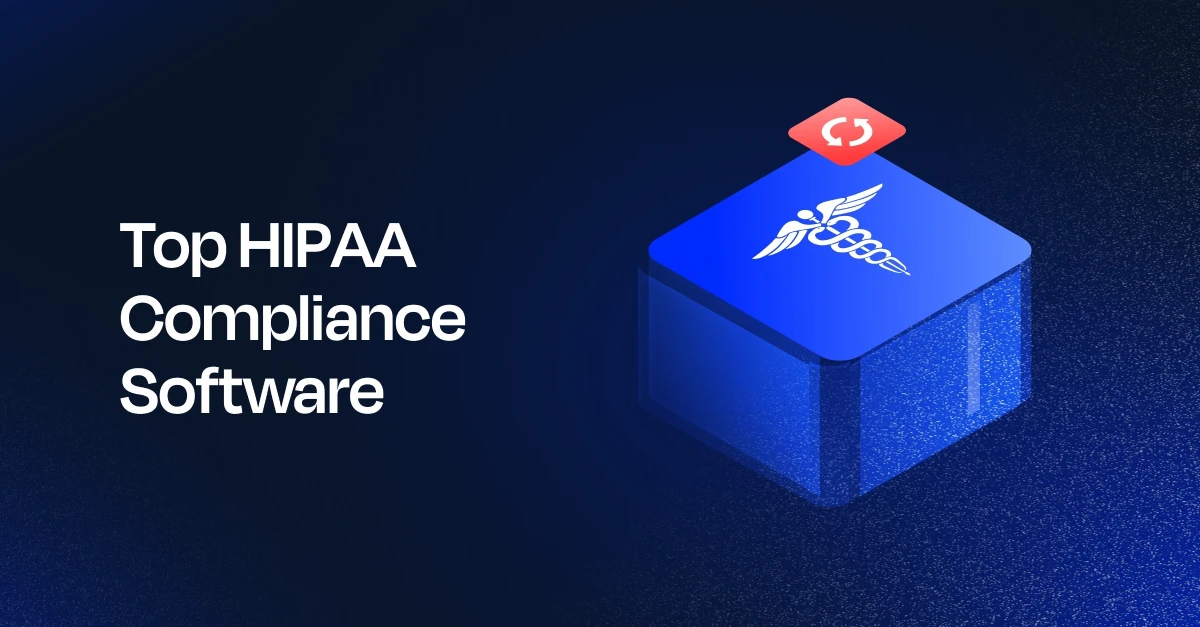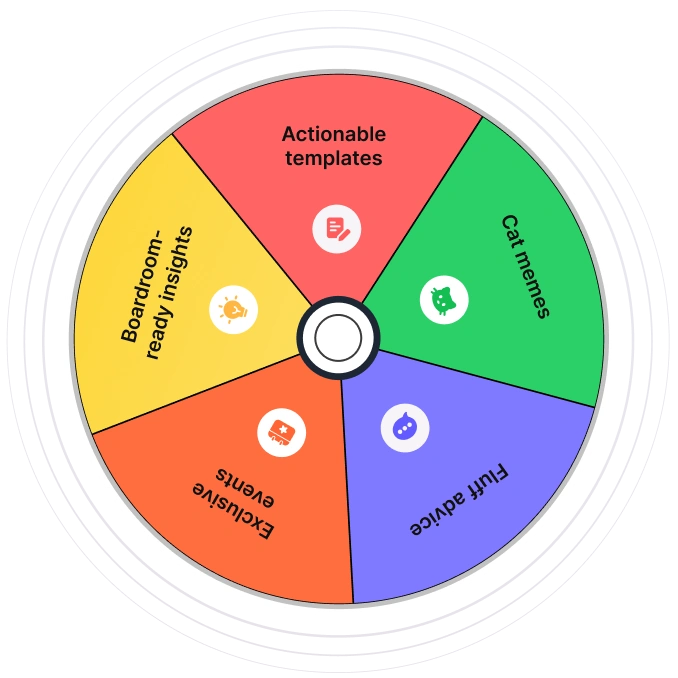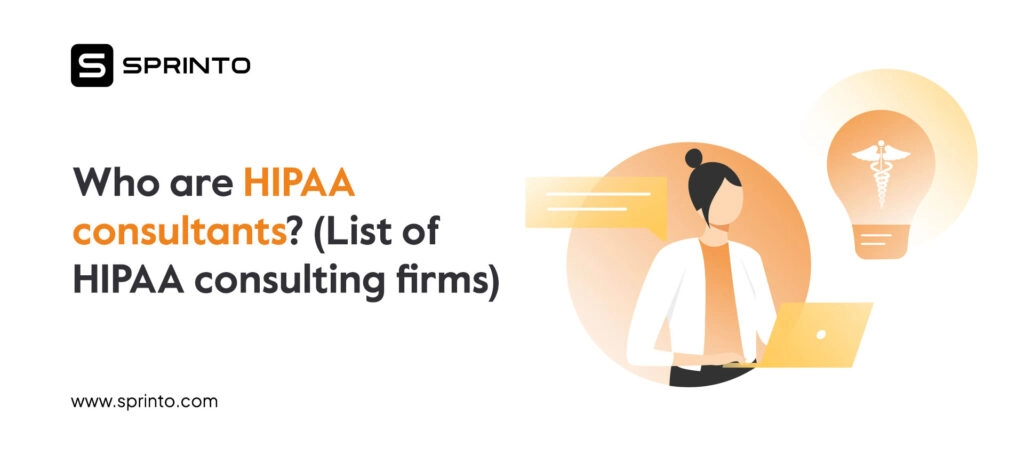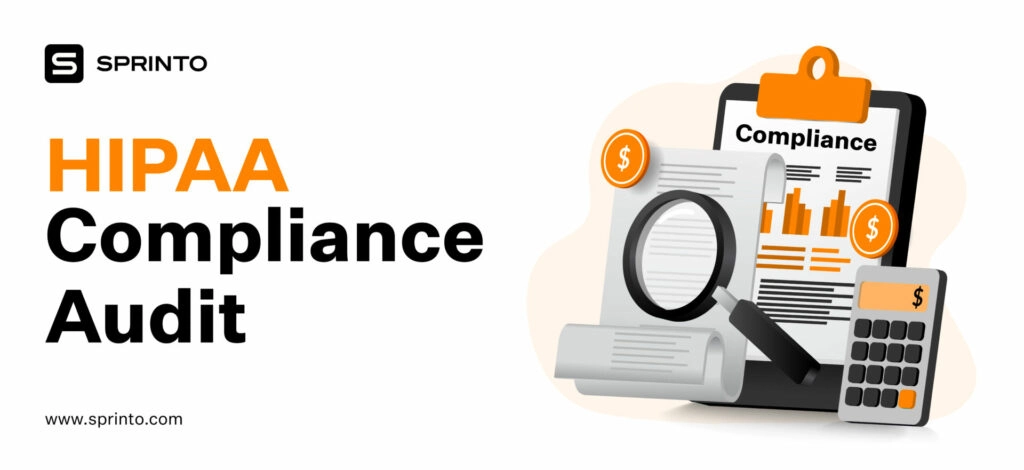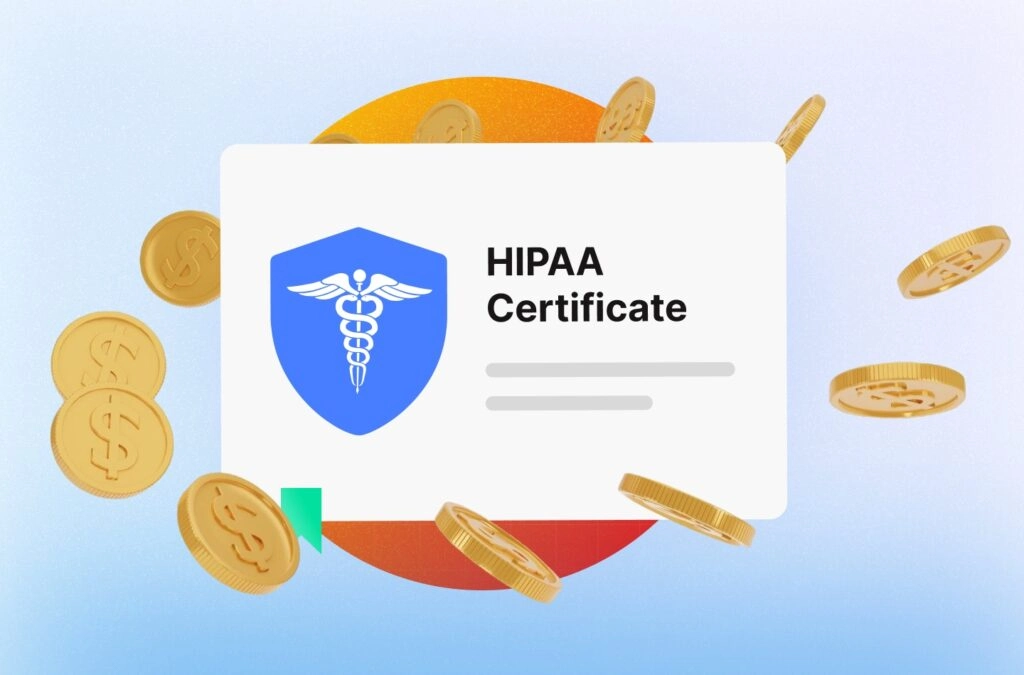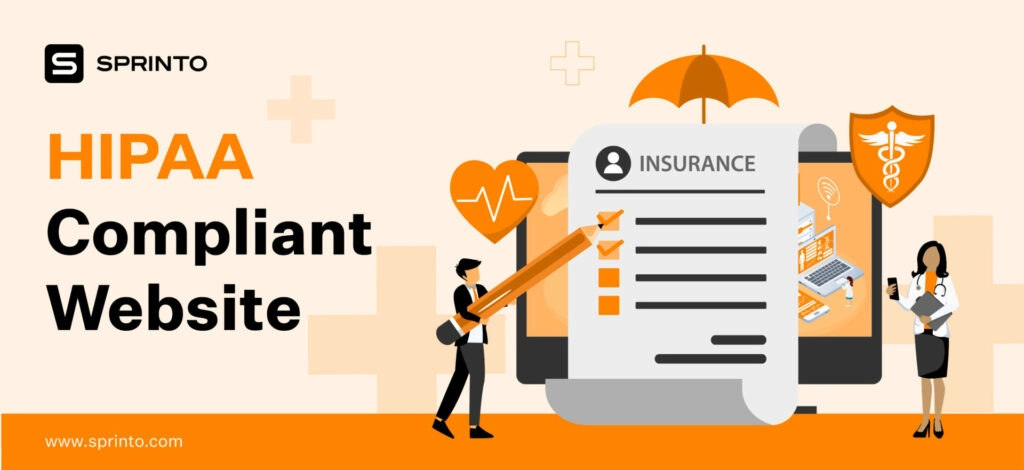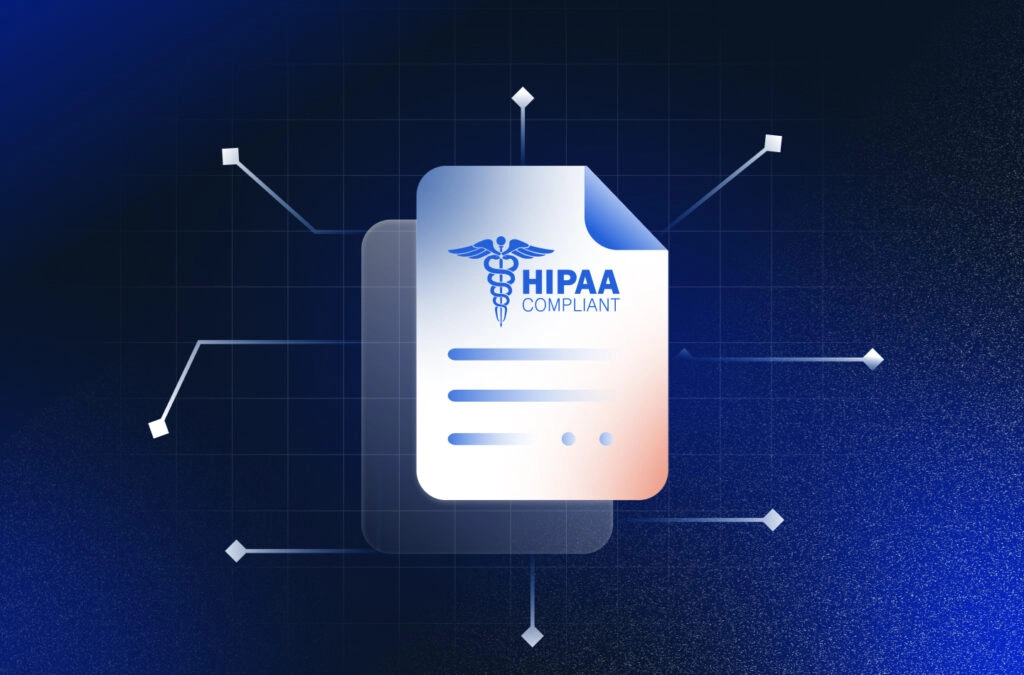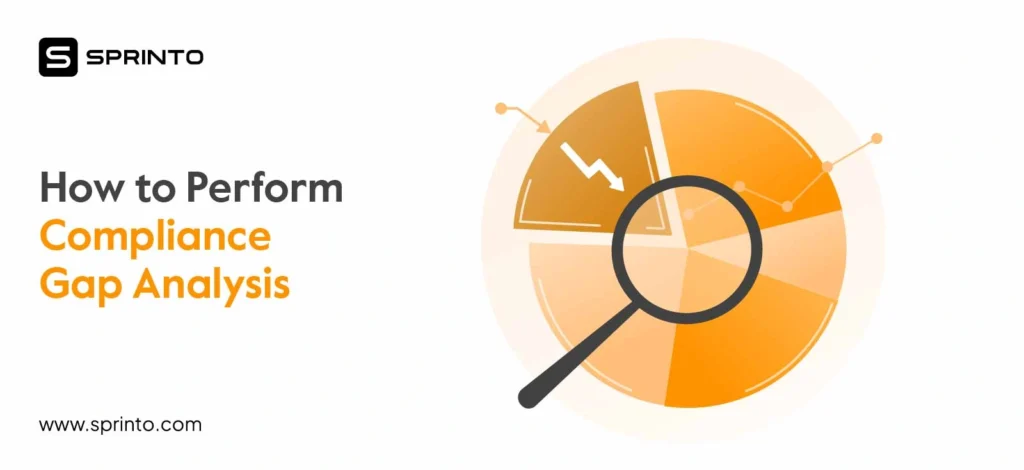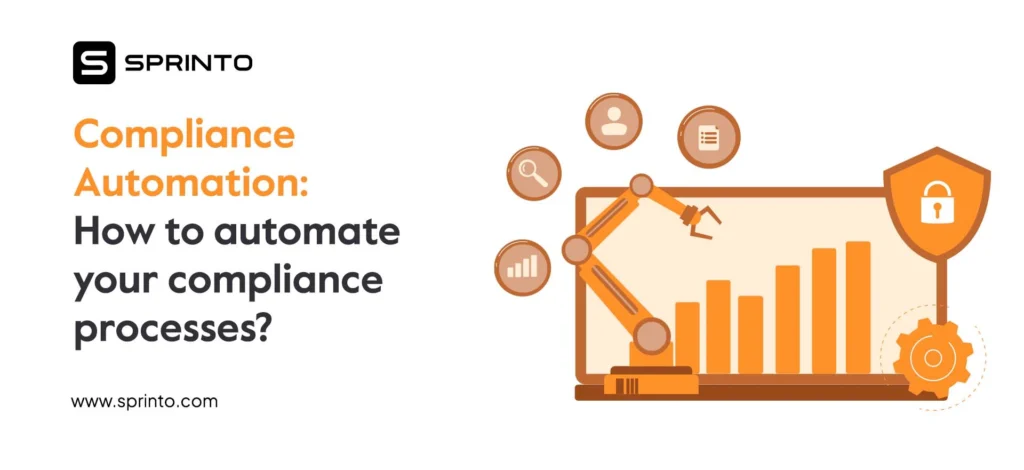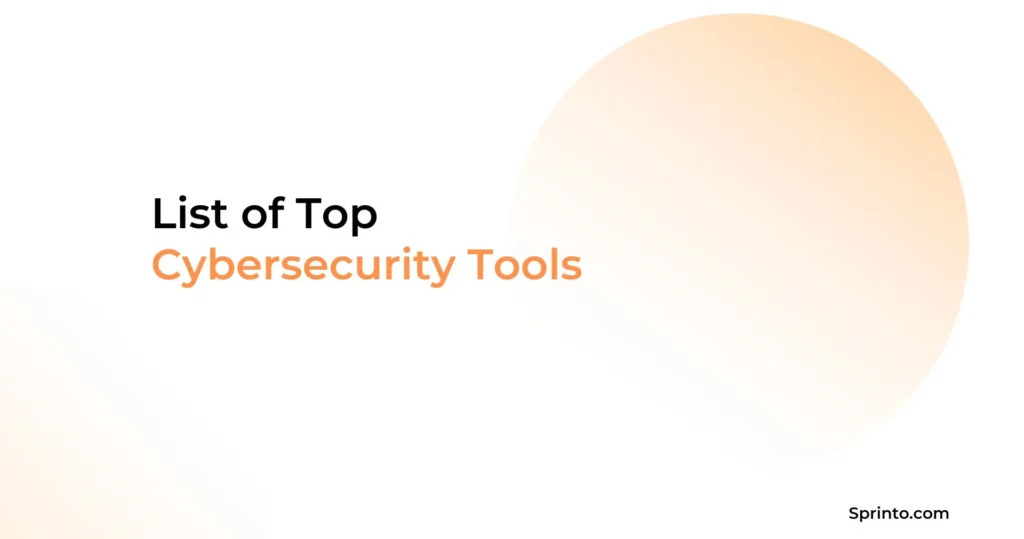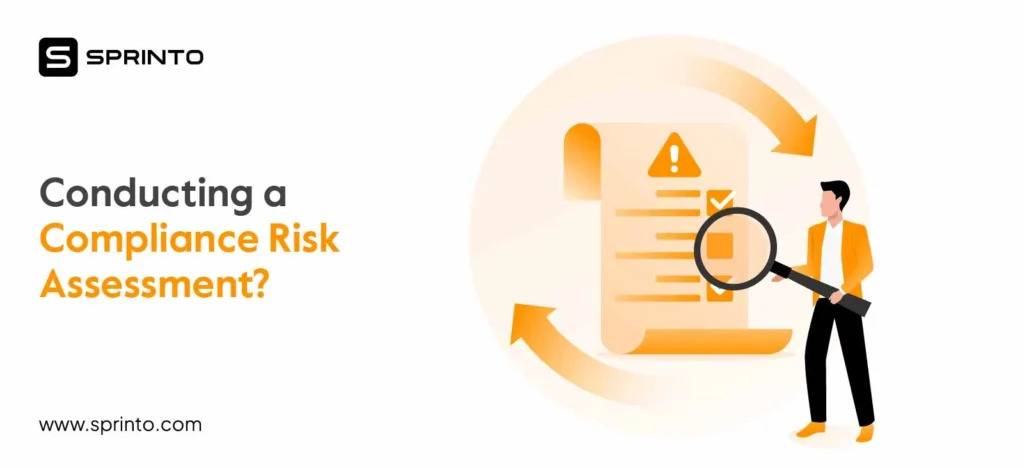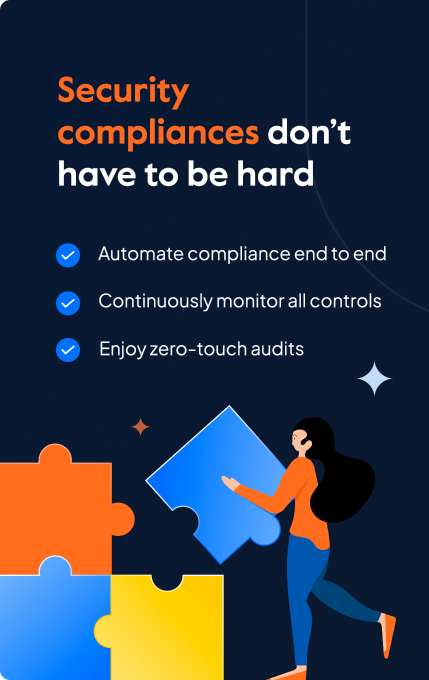HIPAA compliance can become increasingly complex as a healthcare organization grows. With more patient data, tools, and vendors to manage, meeting regulatory requirements takes a significant amount of time and effort. HIPAA compliance software helps reduce this workload by organizing your security tasks, automating evidence collection, and keeping your documentation up to date.
In this guide, we take you through what a HIPAA compliance software is, why organizations use it, and how the right solution can make compliance easier, faster, and more reliable.
| HIPAA compliance software automates security monitoring and documentation to prevent breaches and meet regulatory requirements |
| Sprinto is one of the top security compliance automation platforms, earning a 4.8/5 rating from 1,200+ reviews on G2. Its built-in HIPAA controls and continuous monitoring help healthcare organizations achieve and maintain compliance with minimal effort. |
| When selecting HIPAA compliance software, consider factors such as ease of use, integration capabilities, automation of security controls, and real-time compliance monitoring. |
Let’s break down the top 10 HIPAA compliance platforms for 2026 that’ll keep you out of OCR’s crosshairs.
What is HIPAA compliance software?
HIPAA compliance software is a specialized platform that helps healthcare organizations safeguard the electronic protected health information (ePHI) of patients and meet federal compliance requirements.
These digital tools replace manual tracking methods with organized systems that monitor, document, and maintain your healthcare organization’s HIPAA compliance status.
Most healthcare organizations deal with thousands of patient records daily. Each record contains sensitive information that needs protection against unauthorized access, breaches, and data loss.
The HIPAA compliance software gives you a central dashboard where you can monitor your compliance status across different departments and systems.
Here’s how it helps your organization:
- Flags security gaps that could lead to breaches or violations
- Documents your policies and procedures for HIPAA auditors
- Trains your staff on proper protocols for handling protected health information
- Monitors system access and logs who viewed what information and when
- Schedules regular risk assessments to catch new threats
- Alerts you when something falls out of compliance
Why do you need a HIPAA compliance tool?
Managing HIPAA requirements manually can become overwhelming as your organization handles more patient data, systems, and vendors. Here’s how a HIPAA compliance tool helps you stay organized and reduces the risk of errors by bringing everything into one platform:
- Tracks all HIPAA controls and requirements in one place
- Automates evidence collection and keeps documentation up to date
- Reduces the chance of missing tasks or falling behind on compliance
- Keeps teams aligned with clear policies and workflows
- Makes audits faster, more accurate, and easier to manage
Using a dedicated tool not only simplifies daily compliance work but also ensures your organization stays continuously compliant as it grows.
Types of HIPAA compliance tools and software
There are several types of HIPAA compliance tools and software depending on particular use cases; some will evaluate your risks while others focus on documentation.
Here are some of the common types you should know about:
Risk assessment tools
These tools help identify vulnerabilities that could compromise protected health information.
They support HIPAA-required security risk assessments by flagging issues, like outdated systems or unnecessary user access, and organizing them into clear remediation steps.
Policy management software
These tools provide version control, access tracking, and centralized storage for policies, procedures, and forms.
They also streamline updates as regulations change, ensuring teams reference the latest guidance.
Training management platforms
These platforms track employee participation in HIPAA training.
Administrators can assign modules based on roles, monitor completion rates, and maintain records for audit purposes.
Some tools also include refresher reminders or training tied to risk areas.
Breach management solutions
Built to streamline the response to potential breaches, these tools guide organizations through investigation, documentation, and reporting.
They help assess whether an incident meets the HIPAA definition of a breach and store records for compliance checks.
Access control monitoring
This software keeps a record of who accesses patient data, when, and from which device or location.
It highlights anomalies (such as access outside of working hours) and helps demonstrate compliance with HIPAA’s audit and access control standards.
BAA managers
Tools in this category track all active business associate agreements (BAAs), renewal timelines, and associated risk details.
This ensures documentation stays current and accessible during audits or vendor reviews.
Comprehensive compliance suites
These platforms combine multiple HIPAA tools—risk assessments, training, policy management, and breach response—into a single interface.
They’re often used by organizations that want to manage compliance centrally and reduce reliance on spreadsheets or disconnected systems.
10 best HIPAA compliance software in 2026
Here’s a list of HIPAA-compliance software you need to know about in 2026:
| Tools | Type | Strength | Best For |
| Sprinto | Compliance automation platform | All-in-one HIPAA toolkit | Small and mid-sized tech-forward orgs |
| Compliancy Group | HIPAA-first compliance suite | Guided workflows & coaching | Small clinics/practices |
| HIPAA One | Risk assessment tool | Automated SRA & remediation tracking | Multi-location orgs |
| HIPAA E-tool | Browser-based compliance tool | Customizable templates and resources | Independent providers and small businesses |
| HIPAAtrek | HIPAA program manager | Centralized policy & training system | HIPAA-dedicated teams |
| Clearwater | Consulting-led platform | Risk analysis, audit support | Hospitals & enterprises |
| StandardFusion | GRC software | Multi-framework support | Compliance-heavy orgs |
| HIPAAMATE | Lightweight HIPAA software | Step-by-step workflows | Solo providers |
| EPICompliance | Compliance training system | HIPAA, OSHA, Medicare training | Small healthcare teams |
| MedStack | Compliant cloud platform | Infrastructure + policy templates | Digital health startups |
1. Sprinto
Sprinto is a compliance automation platform that helps healthcare organizations stay on top of HIPAA without getting buried in manual effort.
While it’s built to support multiple frameworks, its HIPAA offering is robust, structured, and easy to deploy, making it a solid choice for teams that don’t have the time or headcount to babysit compliance tasks.
The platform gives you a full HIPAA program out of the box. That includes risk assessments, policy templates, training modules, incident response workflows, and more—all mapped to HIPAA requirements.
It’s designed to bring all the moving parts under one roof so you’re not juggling checklists, spreadsheets, and endless back-and-forth with auditors.
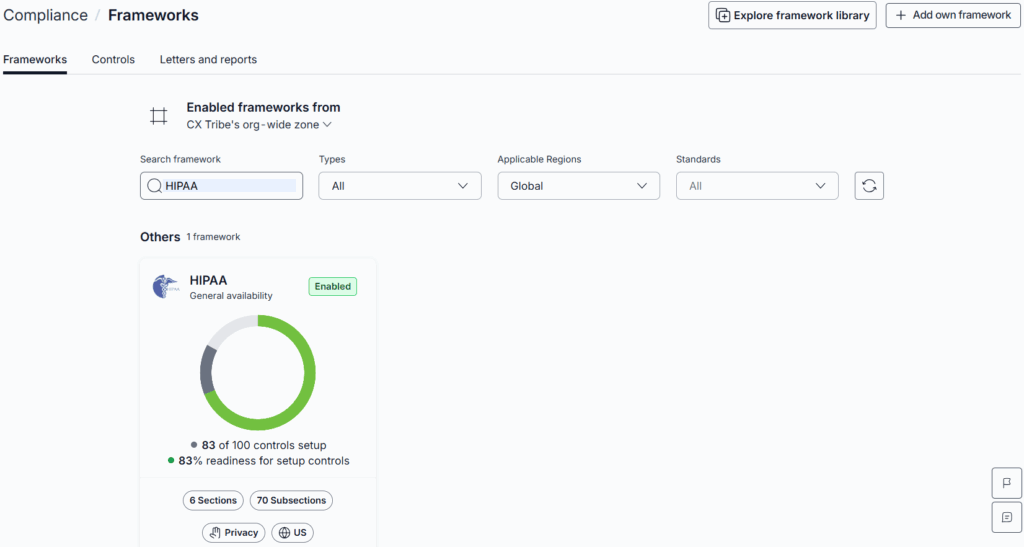
Key features
- Out-of-the-box HIPAA program: Pre-built HIPAA compliance framework, ready to configure
- Automated risk assessments: Map risks and link them to relevant controls with built-in registers
- Continuous monitoring: Real-time alerts and checklists to catch compliance drift before it snowballs
- Data breach and incident response modules: Built-in workflows for breach reporting and remediation
- Vendor management: Track and manage BAAs and third-party risk
- HIPAA training modules: Assign and monitor employee training from within the platform
- Audit-ready documentation: Automatically gather and organize audit evidence as you work
Pros
- Ready-to-use HIPAA program with automation built in
- Covers policies, training, risk assessments, and audit prep
- Expert support ensures smooth onboarding and customization
- Generates real-time, audit-ready documentation
Cons
- May feel structured for teams wanting full control over custom workflows
- Less suited for orgs preferring to build everything in-house
Best for
Sprinto is well-suited for healthcare startups, digital health vendors, or any tech-forward company handling ePHI that needs to get HIPAA-compliant—fast.
2. Compliancy Group
Compliancy Group is a healthcare-first compliance platform designed to help small and mid-sized practices manage HIPAA more systematically.
The tool emphasizes guided workflows and checklists, making it easier for teams without dedicated compliance personnel to stay on track.
What differentiates it is its built-in coaching model. From onboarding through implementation, users are supported by assigned specialists who walk them through risk assessments, policy rollouts, and audit prep.
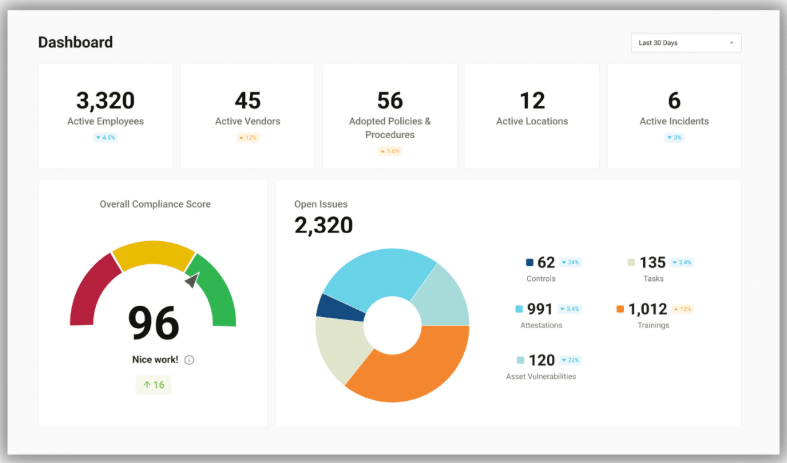
Key Features
- Compliance dashboard: Tracks task progress across assessments, training, and vendor updates
- Policy templates and customization: Includes editable HIPAA-aligned policies for faster setup
- Vendor tracking and BAA management: Maintains logs of third-party agreements and annual reviews
- Trust Badge: Public indicator of active compliance status with real-time updates
- Guided onboarding and support: Offers step-by-step help through risk analysis and remediation
Pros
- Guided workflows simplify HIPAA tasks for smaller teams
- Built-in coaching model supports onboarding and audits
- Pre-loaded policies and a centralized dashboard reduce setup time
Cons
- May feel too prescriptive for teams that prefer customization
- Limited support for frameworks outside HIPAA
Best for
Small practices or clinics that want guided HIPAA compliance without building a program from scratch.
3. HIPAA One
HIPAA One is a cloud-based platform built to simplify the security risk assessment (SRA) process.
It offers a structured, repeatable way to handle HIPAA assessments, helping organizations replace spreadsheets and manual workflows with guided risk management.
The platform supports both privacy and breach risk assessments, with built-in tools for documentation, remediation tracking, and audit readiness.
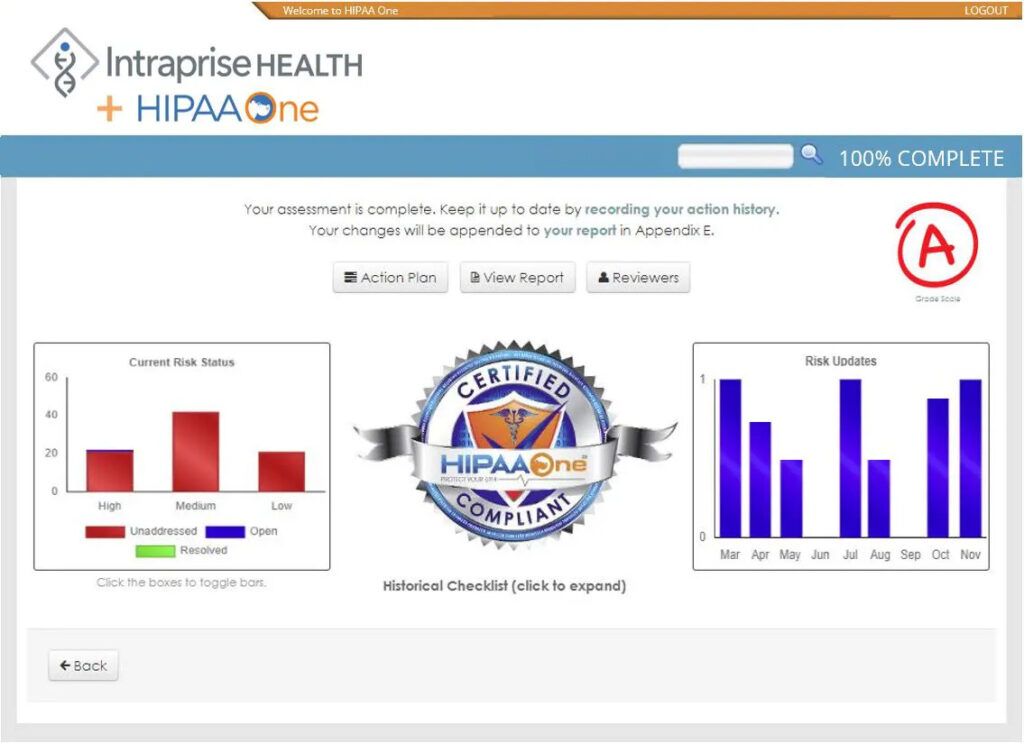
Key features
- Automated SRA workflows: Guides teams through assessments with built-in logic and task delegation
- Privacy and breach risk assessments: Identifies vulnerabilities across systems, networks, and devices
- Year-over-year data reuse: Pre-fills prior responses to speed up recurring assessments
- Remediation tracking: Links risks to actions, making it easier to build and follow mitigation plans
- Policy and documentation tools: Provides a template library and centralized space to store compliance artifacts
Pros
- Streamlines annual risk assessments with guided workflows
- Reuses previous data to reduce repetitive effort
- Built-in remediation tracking helps teams stay audit-ready
Cons
- Interface may take time to navigate for first-time users
- Support quality can vary depending on assigned personnel
Best for
Mid-sized providers or multi-site healthcare groups that need a repeatable, audit-ready process for SRAs.
4. HIPAA E-Tool
HIPAA E-Tool offers a browser-based compliance system built with small practices and business associates in mind.
It brings together editable policies, guided risk assessments, and plain-language explanations of HIPAA rules—making it easier to work through compliance without specialized knowledge or outside help.
Instead of presenting HIPAA as a legal maze, the platform breaks it down into steps and checklists you can act on.
Users can search for what they need, customize forms, and document their compliance process along the way.
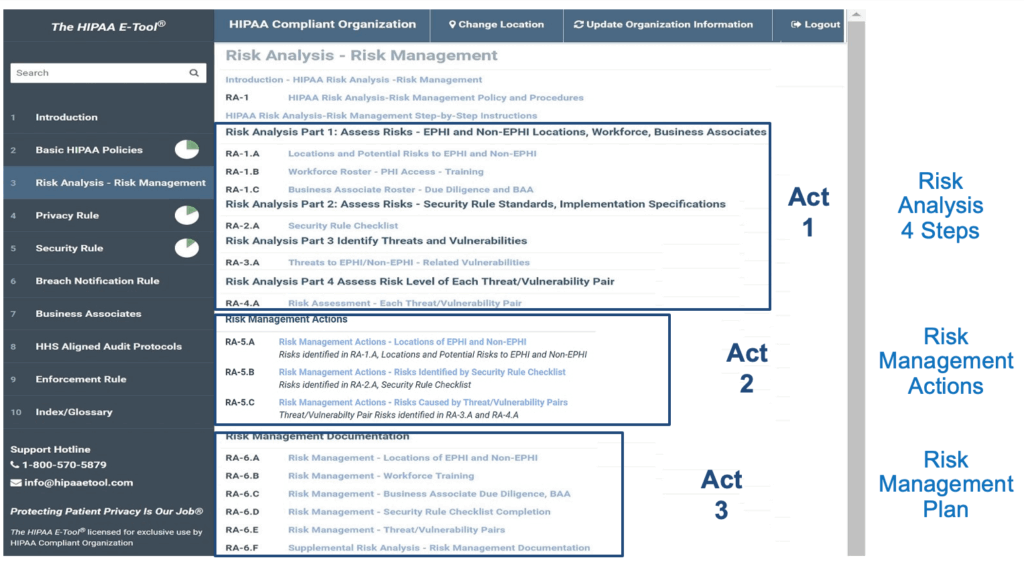
Key features
- Interactive risk analysis: Step-by-step tool to identify risks and assign mitigation tasks
- Customizable templates: Editable policies, forms, and notices pre-written for compliance use
- Searchable HIPAA library: Quick access to rules, terms, and related documents
- Live content updates: Real-time changes as federal rules or guidance evolve
- Workforce-ready docs: Print-ready materials for staff training and audit preparation
Pros
- Offers structured guidance with editable templates and plain-language explanations
- Helpful for teams without in-house HIPAA expertise
- Includes built-in references to clarify regulatory requirements
Cons
- Most workflows are manual, which may slow things down as teams scale
- Limited integrations may not suit teams using modern compliance stacks
Best for
Independent providers or smaller teams that want a straightforward, hands-on way to meet HIPAA obligations without starting from scratch.
5. HIPAAtrek
HIPAAtrek helps teams move beyond static checklists by centralizing all HIPAA documentation, policies, training, and breach management in one system.
It’s structured, thorough, and designed to stay audit-ready year-round.
Built specifically for HIPAA, it gives smaller compliance teams the tools and structure to manage requirements without chasing paperwork across platforms.
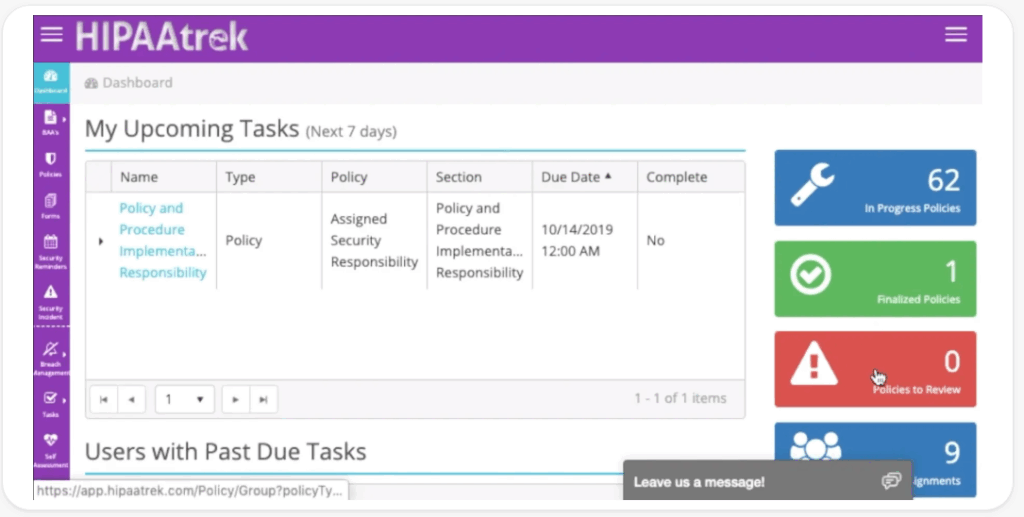
Key features
- Policy and training management: Assigns, tracks, and logs training in line with HIPAA policies
- Automated alerts and reminders: Flags expiring documents or overdue tasks
- Breach assessment module: Logs incidents and runs HIPAA risk assessments
- Version control: Keeps policy history for 10+ years to meet retention needs
- Expert-built templates: Includes policy, BAA, and training resources
Pros
- Centralizes HIPAA policies, training, and audit documentation
- Built-in reminders help reduce manual effort
- Good fit for teams formalizing HIPAA processes
Cons
- Focused solely on HIPAA; limited support for other frameworks
- May require a secondary tool for broader compliance coverage
Best for
Compliance teams or privacy officers who want a structured, all-in-one HIPAA management system.
Get HIPAA compliant faster with automation
6. Clearwater
Clearwater offers a risk-driven approach to HIPAA compliance through a mix of consulting services, managed programs, and proprietary software.
It’s built for healthcare organizations that need help navigating complex risk environments and aligning with regulatory expectations like the OCR audit protocol.
The platform supports policy management, workforce training, risk analysis, and breach readiness—typically delivered through customized consulting engagements.
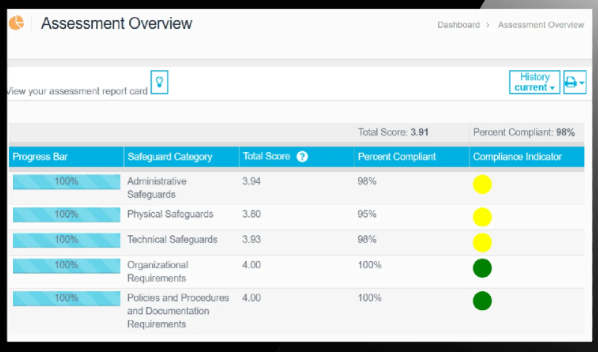
Key features
- Risk analysis and management: OCR-aligned risk assessments using IRM|Analysis®
- HIPAA policy development: Custom templates mapped to operational needs
- Privacy and breach evaluations: Focused reviews of organizational readiness
- Audit preparation and support: Guidance on documentation and response workflows
- Role-based training modules: Security and privacy awareness programs for staff
Pros
- Strong focus on HIPAA risk assessments and audit support
- Backed by experienced consultants for tailored guidance
Cons
- Heavily reliant on consulting; less suited for teams wanting hands-on control
- Platform may be more than what’s needed for smaller, low-risk environments
Best for
Hospitals, enterprise health systems, or vendors needing formal risk analysis and OCR-aligned audit support.
7. StandardFusion
StandardFusion is a GRC platform that supports HIPAA compliance by helping organizations monitor and manage administrative, physical, and technical safeguards tied to PHI.
While it’s a broader risk and compliance tool, it can be adapted to track HIPAA-related controls across departments and frameworks.
It’s most relevant to organizations managing multiple frameworks—HIPAA, HITRUST, ISO 27001, and more—and needing a seamless way to handle documentation, risk assessments, and internal audits.
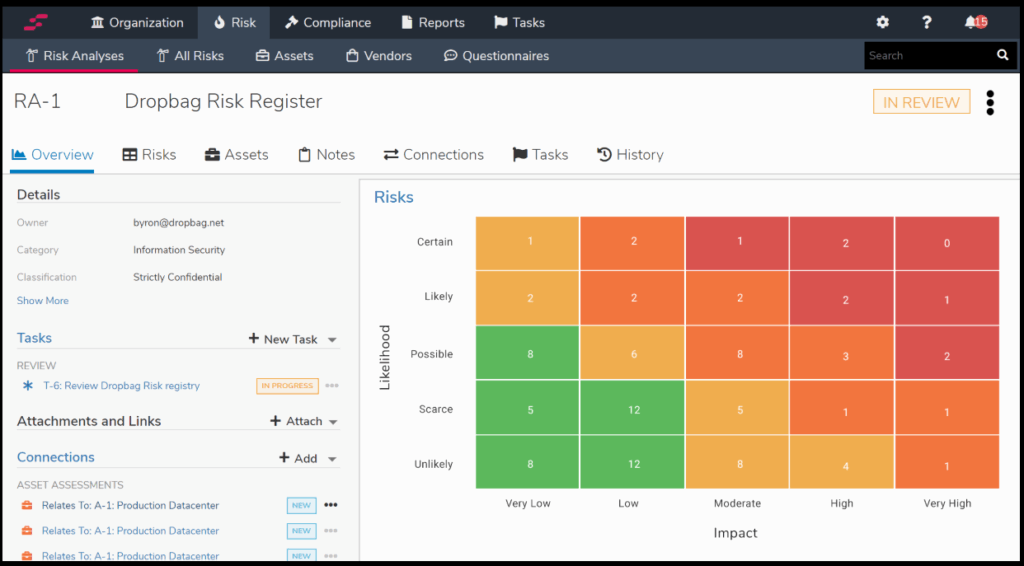
Key features
- Control mapping across frameworks: Link HIPAA requirements to broader compliance efforts
- Automated workflows: Assign, track, and report on compliance tasks from a single dashboard
- Risk management module: Identify, assess, and monitor risk based on customizable criteria
- Vendor and audit tracking: Manage third-party risk and document audit readiness
- Policy and evidence repository: Centralized library to store HIPAA-aligned controls and documentation
Pros
- Works well for managing HIPAA alongside other frameworks
- Helps centralize tasks like control mapping and audits
Cons
- Setup can take time
- Reporting may feel limited for complex needs
Best for
Healthcare organizations managing multiple frameworks who want to centralize HIPAA alongside other standards.
8. HIPAAMATE
HIPAAMATE is a lightweight HIPAA compliance platform designed for solo providers and small practices.
It offers a structured way to manage policies, training, risk assessments, and BAAs without requiring the help of consultants or relying on siloed spreadsheets.
The platform uses guided workflows to help users complete essential HIPAA tasks and maintain documentation over time.
Key features
- Step-by-step compliance workflow: Guides users through core HIPAA requirements
- Policy and training tools: Includes built-in templates and staff training modules
- Risk assessment and ePHI tracking: Simplifies annual evaluations and documentation
- BAA management: Stores and tracks agreements with business associates
- Reminders and alerts: Notifies users about pending tasks or policy reviews
Pros
- Simple workflows and templates make it easy to get started
- Built-in alerts help small teams stay on track
Cons
- May not scale well for larger teams
- Limited flexibility for customized compliance setups
Best for
Solo providers or small clinics looking for a low-cost, simple HIPAA compliance platform.
9. EPICompliance
EPICompliance is a compliance platform geared toward small to mid-sized healthcare providers.
Its HIPAA functionality includes training modules, policy templates, BAA tracking, and risk assessments, all organized into monthly task lists that help maintain continuity over time.
The emphasis is on structure and checklist-driven workflows rather than deep customization or automation.
Key features
- HIPAA privacy and security training: Includes staff education with course tracking
- Policy and document management: Centralized access to updated templates and required forms
- Business Associate Center: Tracks and stores BAAs in a structured format
- Automated reminders and task lists: Keeps compliance actions on schedule
- Audit readiness support: Provides documentation and assistance during audits
Pros
- Covers HIPAA, OSHA, and Medicare under one system
- Helps smaller teams stay organized with checklists and structured task flows
- Includes ready-to-use templates for policies, training, and BAAs
Cons
- Interface can feel dense for first-time users
- Reporting may not scale well for complex or growing environments
Best for
Smaller healthcare teams that require a bundled solution for HIPAA, OSHA, and Medicare compliance tasks.
10. MedStack
MedStack is a compliance infrastructure platform tailored for digital health companies.
Rather than managing HIPAA controls separately, it allows organizations to build and deploy healthcare apps on a pre-configured environment with inheritable safeguards.
It combines policy templates, staff training, and audit readiness tools with a secure hosting layer—reducing the lift typically required to meet HIPAA’s technical and administrative requirements.
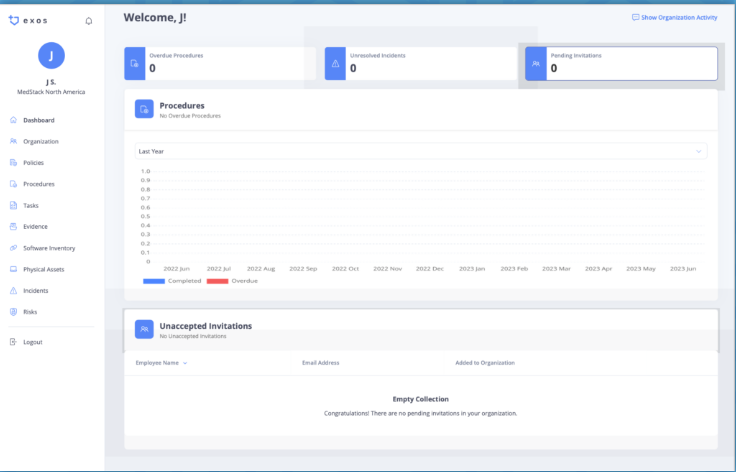
Key features
- HIPAA policy templates and training: Pre-loaded documentation and staff education
- Inheritable controls: Administrative, physical, and technical safeguards mapped to HIPAA
- Evidence automation: Tracks security tasks and generates audit documentation
- Secure cloud deployment: Managed infrastructure built to meet HIPAA and SOC 2
- Support for vendor assessments: Includes tools to respond to security questionnaires
Pros
- Streamlines HIPAA compliance for digital health apps with pre-configured infrastructure
- Offers inheritable safeguards and audit-ready documentation
Cons
- Less flexible for teams needing fine-grained infrastructure control
- Custom deployments may require workarounds during scale
Best for
Digital health startups that need a compliant cloud infrastructure with built-in HIPAA safeguards.
Sprinto gives you one source of truth for HIPAA.
👉 Talk to experts →
How to choose the right healthcare compliance management tool?
Start by choosing a tool that helps you meet HIPAA requirements without overwhelming your team. The right platform should simplify your day-to-day, adapt to your environment, and keep you prepared—not busy.
Here are six factors you should consider:
1. Built-in HIPAA coverage
Start by checking how well the platform maps to HIPAA’s requirements.
Look for tools that come with preloaded controls, policy templates, and workflows that reflect what the regulation actually asks for, not just a generic GRC framework.
2. Automation and monitoring
Manual checklists are a thing of the past. A good platform should flag issues in real-time, help you run assessments without starting from scratch, and keep tabs on drift or gaps as you go.
The less you need to chase compliance, the better.
3. Integration with your stack
The tool should work with your systems, not around them.
Whether that’s EHRs, HR platforms, or cloud infrastructure, seamless integration means fewer silos and more accurate tracking.
4. Scalability across teams or sites
If you’re growing or managing multiple locations, look for centralized visibility and repeatable processes.
Some platforms are easier to scale than others.
5. Cost and value balance
Pricing should match the scale and needs of your organization.
Look for tools that bundle core features like training, policy templates, and risk assessments without hidden add-ons. This ensures you don’t pay extra just to cover the basics.
6. Support when you need it
HIPAA is complex, and every organization runs into questions.
Prioritize tools that offer real guidance, not just a knowledge base.
Start Building a Better Compliance Program Today
HIPAA compliance software should do more than tick boxes. It should help you run a complete, audit-ready program without the stress. That’s where platforms like Sprinto stand out.
Sprinto brings structure and automation together so your team isn’t bogged down by guesswork or manual tracking. It lets you map and manage HIPAA requirements from one centralized place while offering guided implementation support.
The in-built HIPAA training modules, HIPAA-aligned policy templates, tool support, documentation and legal aid and automated evidence collection help fast-track the process and enable you to get audit ready in weeks instead of months.
The program is also continuously monitored so you can uphold the technical and administrative safeguards on an ongoing basis.
Take the platform tour today and kickstart your journey.
FAQs
HIPAA compliance means protecting patient health information in line with federal law.
It requires you to control who can access sensitive data, how it’s shared, and how it’s stored. That includes having the right policies, training, and safeguards in place—not just for systems, but for people too.
The aim is simple: reduce the risk of breaches and show that you’re doing your part to keep patient information secure.
HIPAA-compliant software does more than just store data securely. It should support the core requirements of the law, like risk assessments, employee training, documentation, and access control.
You also want encryption, audit logs, and breach tracking.
If a tool helps you meet what HIPAA expects of you and keeps your process tight, you’re in the right territory.
Because trying to manage HIPAA using email, checklists, and folders only works for so long. As soon as you grow or bring in more partners, things slip.
A good compliance tool keeps everything connected, including your policies, your staff training, your audit logs, and your risk reviews. It helps you spot issues early and stay ready if anyone ever asks to see your proof.
There isn’t one right answer here. Some tools are great for small clinics; others are built for tech companies or hospital systems.
What matters is how well the software fits your setup—not just today, but six months from now.
Look at how it handles automation, how it connects to your stack, and how much oversight it gives you.
It depends on how big your team is and what you need the software to cover.
Some tools start at a few hundred dollars a month. Others (especially the more comprehensive ones) can run into the $1,000–$2,000/month range.
It’s worth asking what’s included: things like support, training, and risk assessments can make a big difference in what you actually end up paying for.
A team that walks with you through implementation, assessments, or audit prep can save you months of trial and error.
Payal Wadhwa
Payal is your friendly neighborhood compliance whiz who is also ISC2 certified! She turns perplexing compliance lingo into actionable advice about keeping your digital business safe and savvy. When she isn’t saving virtual worlds, she’s penning down poetic musings or lighting up local open mics. Cyber savvy by day, poet by night!
Explore more
research & insights curated to help you earn a seat at the table.



